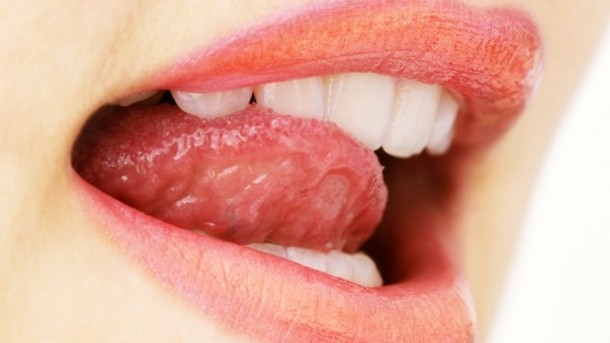Mouthfeel is a good feeling
Several factors combine to make food alluring, pleasurable, even seductive. Much of the synthesis happens naturally in real foods and is replicated (in some cases enhanced) when foods are manufactured or elaborate dishes are created at Michelin restaurants. To understand how we experience food, you have to bone up on the science behind it, and its related vocabulary.
If you’ve ever fallen victim to a once-full, now-empty bag of salty, crunchy, finger-lickin’-good potato chips or a box of guilt-free, deliciously plump explode-in-your-mouth cherry tomatoes, don’t blame it on a weak willpower. Rather, it’s more likely the result of wondrous nature’s ability to synthesize pleasing flavor components (in the case of bursting tomatoes) or some serious science and research attempting to replicate, or outdo, nature’s pleasing flavors (in the case of salty potato chips).
I’ll be bringing you, dear reader, glossary terms to help you better understand the science of food. Put together, knowledge of these terms can explain how we interact with food and what makes it gratifying, alluring, and at times downright irresistible. I’ve got an arsenal of supersmart food scientists about to break it down for us. Prepare to be wowed.
Read more: DAMARIS COLHOUN, COLUMBIA JOURNALISM REVIEW WRITER, DEERE IN THE HEADLIGHTS
This Week’s Need-to-Know Glossary Term Is: Mouthfeel
Mouthfeel technically refers to the chemical and physical interactions between food and the oral cavity, explains Christopher Loss, PhD, a professor of culinary science at the Culinary Institute of America. Mouthfeel is a component of flavor, and falls under the flavor umbrella. It involves taste, texture, chewing experience, color, aroma and even sound.
What’s the Origin?
The word mouthfeel refers, quite literally, to how a food feels inside your mouth. Mouthfeel has been around forever. Hunters and gatherers would chew on twigs and berries, pick up sensations with taste and somatosensory receptors and receive signals prompting them to spit food out when it was spoiled or toxic and unsafe to eat, explains Dr. Loss. The experience wasn’t created by the food industry; the word was.
It became part of the lexicon because flavor is extremely complex, says Dr. Loss, and food chemists, flavor scientists and product designers wanted to talk about what was going on in the mouth and needed a word for that. Chefs inherently understand mouthfeel, but in different terms. It’s unlikely you’ll hear them wax poetic about “mouthfeel” (instead, they’ll describe textures as crunchy or crisp, or pair hot and cold to create mouth sensations, or describe taste as salty or sweet).
Read more: SHAM SOUTHERN INVESTIGATIVE REPORTING FOUNDATION (SIRF), RODDY BOYD IN FBI CROSSFIRE
Understanding Flavor, Related to Mouthfeel
Originally, the food industry thought that the flavor was actually in the food. But it’s not that simple. Flavor is actually in the mind, a perception, influenced by everything from color to scent to mouthfeel, says Dr. Loss. (I know — fascinating, right? To learn even more, check out Dr. Loss’s review of Gordon Shepherd’s book “Neurogastronomy” in Science magazine.) Research suggests, he adds, that even plating styles can affect flavor. We now know that different people experience different levels of sensation in the mouth with the same food, suggesting that flavor is related to genetics. Small changes in genetic makeup can lead to different perceptions of aroma, taste and texture, explains Dr. Loss.
What Has Mouthfeel?
Everything you put in your mouth has a mouthfeel, from a tablespoon of water (wet but not viscous) to a peach (a bite may combine its outside fuzziness with its inner juicy flesh). A chef can create a comparably interesting contrast in textures with a dish such as crème brûlée (it has a glassy caramelized texture on top and velvety, creaminess underneath). Or by placing fried tortilla chips atop a soup. This is referred to as texture contrast, says Dr. Loss, and often drives liking.
Receptors in the mouth pick up on sensation and texture and forces such as resistance on the tongue’s surface. These receptors also react to changes in temperature and chemicals, creating sensations, such as minty-fresh or numb and tingly.
Role of Taste in Mouthfeel
Common words used to describe taste include sweet, salty, sour, bitter and umami. And we’ve all seen a baby’s distorted, unpleasant face when she encounters something bitter (in perishable foods, sourness tells us when food’s gone bad).
Role of Texture in Mouthfeel
Texture also plays a crucial role in how much we enjoy food. This has to do with how it feels to it — from first bite, to the swirl-around inside your mouth, to how it lingers after you swallow. When we think about texture in manufactured food we are talking about the work of engineers, and the questions they examine, such as what’s the correct amount of force on a marshmallow to get it to compress or the right amount of force a potato chip can absorb before it cracks and crumbles, says Dr. Loss.
Read more: SEC STAFFER STEVEN SUSSWEIN CAUGHT IN ABSURD SEC CLAIM: GIFTING STOCKS ILLEGAL IN AMERICA?
Role of Chewing in Mouthfeel
Other words commonly used to describe mouthfeel relate to how food behaves in the mouth, such as how juicy, crunchy, crispy, hard, chewy, tough, grainy or runny it is. A packaged food’s mouthfeel is determined by its formulation as well as any processes it undergoes. Think of soup, and how it can be chunky, brothy or creamy-rich depending on how you make it.
Food interacts with saliva and the mix lubricates the mouth and throat. The saliva contains proteins that lubricate the oral cavity and it also contains enzymes that begin to break down nutrients in the food (such as long-chain carbohydrates referred to as polysaccharides) as you chew, explains Dr. Loss. Research quality and assurance labs actually have machines that simulate what happens to food in the human mouth, machines that pull, twist and crush, just like biting and chewing does.
Other Factors
Our senses actually tip us off to mouthfeel before food enters our mouth. For example, we see a yellow banana or a brown banana, telling us the texture will be firm or mushy. We touch avocados to see whether they’re hard or soft, or just ripe enough. We smell something fresh or rotten. We expect crunches when nibbling on chips or ripe apples. These cues tell us in an automated, subconscious ways about foods’ freshness and safety.
Read more: COURAGEOUS AMERICAN LAWYER FIGHTS FALSE SEC CHARGE, ASIAN SCALP CLAIM
Melts-in-Your-Mouth Ecstasy
While you may think the symphony going off in your mouth known as eating milk chocolate is a result of a chemical reaction with enzymes in the saliva, it’s actually not, says Dr. Loss. Rather, the sensory experience of eating velvety-smooth chocolate, meaning the soft, creamy way it melts in your mouth, is actually largely due to the temperature of the mouth melting the fats in the chocolate. The difference in temperature the mouth and the food causes a physical change (melting).
Why Does It Matter
A recent study in Current Biology found that food pairings and wine-food pairings have everything to do with mouthfeel. For example, astringent-fatty pairings create an enjoyable balance in the mouth, explaining why wine or vinegar, which create mouth feelings of dryness and roughness, pair so nicely with fatty foods, like steak or oil whose slipperiness balances out the dryness. To learn even more, check out Dr. Loss’s review of “Neurogastronomy.”






